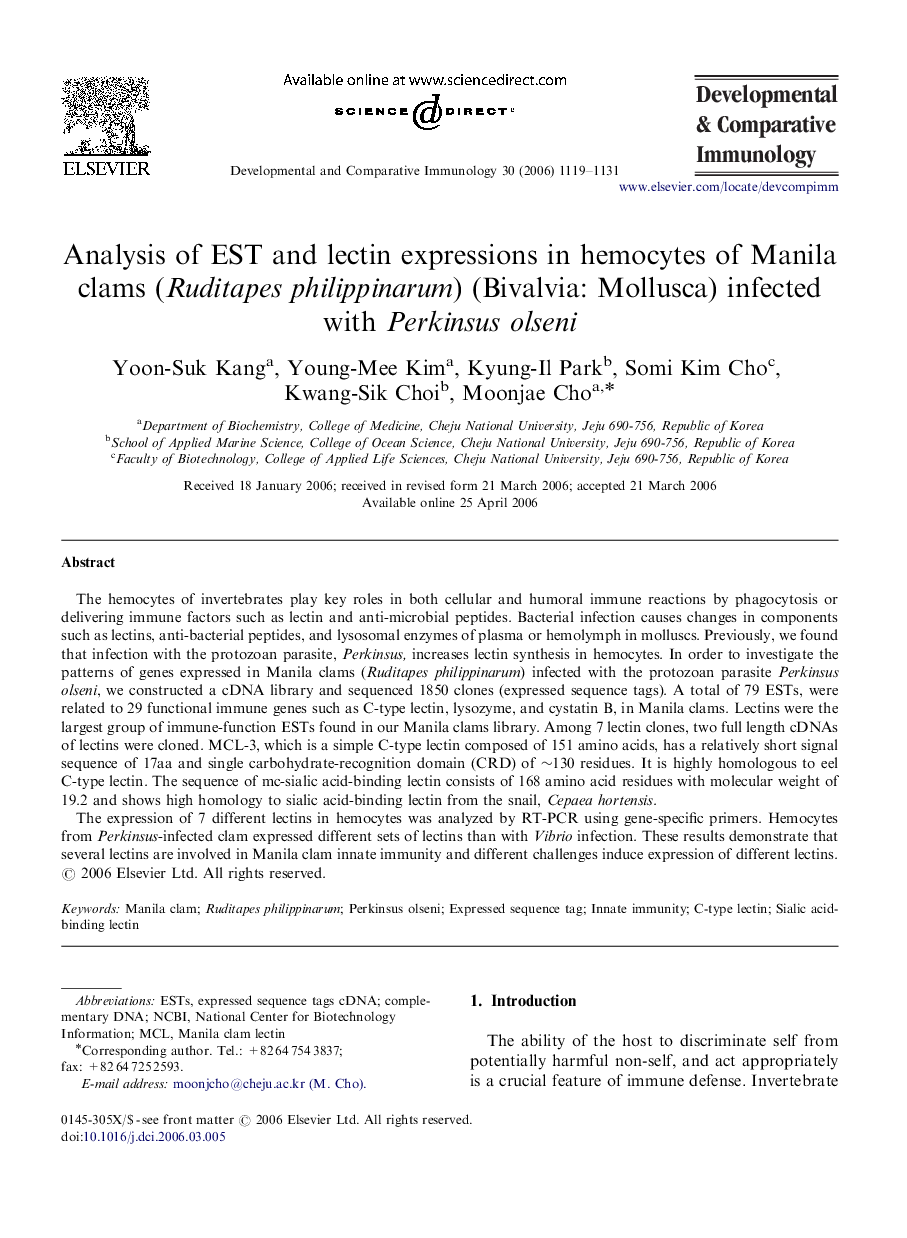| Article ID | Journal | Published Year | Pages | File Type |
|---|---|---|---|---|
| 2430485 | Developmental & Comparative Immunology | 2006 | 13 Pages |
The hemocytes of invertebrates play key roles in both cellular and humoral immune reactions by phagocytosis or delivering immune factors such as lectin and anti-microbial peptides. Bacterial infection causes changes in components such as lectins, anti-bacterial peptides, and lysosomal enzymes of plasma or hemolymph in molluscs. Previously, we found that infection with the protozoan parasite, Perkinsus, increases lectin synthesis in hemocytes. In order to investigate the patterns of genes expressed in Manila clams (Ruditapes philippinarum) infected with the protozoan parasite Perkinsus olseni, we constructed a cDNA library and sequenced 1850 clones (expressed sequence tags). A total of 79 ESTs, were related to 29 functional immune genes such as C-type lectin, lysozyme, and cystatin B, in Manila clams. Lectins were the largest group of immune-function ESTs found in our Manila clams library. Among 7 lectin clones, two full length cDNAs of lectins were cloned. MCL-3, which is a simple C-type lectin composed of 151 amino acids, has a relatively short signal sequence of 17aa and single carbohydrate-recognition domain (CRD) of ∼130 residues. It is highly homologous to eel C-type lectin. The sequence of mc-sialic acid-binding lectin consists of 168 amino acid residues with molecular weight of 19.2 and shows high homology to sialic acid-binding lectin from the snail, Cepaea hortensis.The expression of 7 different lectins in hemocytes was analyzed by RT-PCR using gene-specific primers. Hemocytes from Perkinsus-infected clam expressed different sets of lectins than with Vibrio infection. These results demonstrate that several lectins are involved in Manila clam innate immunity and different challenges induce expression of different lectins.
